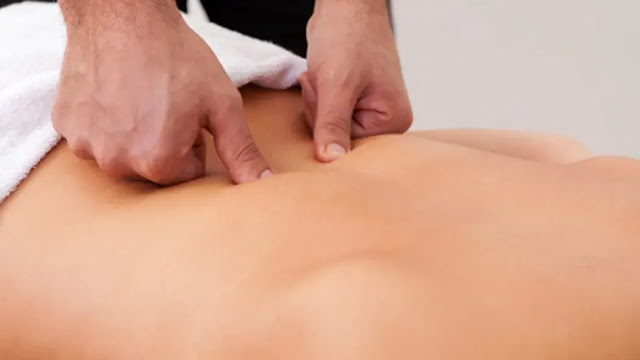Physiotherapy and osteopathy each have their role to play in relieving back pain and are sometimes complementary. Know which technique to prefer depending on the pain you are experiencing.
The osteopath and the physiotherapist do not compete with each other, they complement each other. The physiotherapist is reimbursed, provided that the sessions are prescribed by a doctor, and up to 60% of their amount. The osteo is not reimbursed, but many mutual insurance companies offer a fixed reimbursement for a number of sessions that varies according to the formula chosen. Current rate for a session: 50 to 80 euros. Depending on the back pain, it is preferable to consult an osteopath or a physiotherapist, or even both. What are you suffering from?
It is an acute pain: lumbago, torticollis
It is better to see an osteopath. It is necessary to treat the vertebral dysfunction, most often due to a bad movement. "The tools of the physiotherapist, massages, physiotherapy, flexibility, stretching and gymnastics, cannot achieve this", explains Vincent Arin Stochetti, osteopathic physiotherapist.
The osteopath will free the vertebra, without making it crack, then correct the dysfunctions which could, at a distance, "make the bed" of the lumbago (emotional or muscular stress) or of the torticollis (loss of mobility of the skull or the pelvis).
"If the pain is violent, you should first consult your doctor, who will prescribe a muscle relaxant. The osteo intervenes only once the tensions around the vertebra are released. "
How many sessions? Usually one is enough, then another one three to four weeks later.
It is a chronic lumbago or neck pain
Consult a physiotherapist instead. The origin of the pain must be treated, often linked to a lack of muscle strength and flexibility: "The treatment is based on strengthening and relaxing the muscles concerned. "The work is completed by learning how to lock the lumbar spine and by educating the patient on the correct movements in daily and professional life. "Physiotherapy (electrodes) and massages are used in parallel to soothe inflammation and pain. "
How many sessions? Generally fifteen to twenty.
Osteopathy has limited effects in patients with low back pain
French physicians conducted a study on the effect of osteopathic manipulations in patients with low back pain with pain longer than 6 weeks. The results, published in March 2021 in JAMA Internal Medicine, show that they had a small positive effect on activities of daily living and pain but the improvement was not clinically significant.
The study included 400 people with low back pain who received six sessions of osteopathic manipulation or six sessions of "placebo" manipulation, given by exclusive osteopaths, every two weeks for 3 months. The main evaluation criterion was the reduction in the impact of low back pain on their activities of daily living. Other criteria, known as "secondary judgments", were also taken into account: pain, quality of life, number and duration of sick leave, number of episodes of low back pain and use of medication at three and twelve months.
The results showed that at three months, the average reduction in score was -4.7 points in the osteopathy group and -1.3 points in the placebo group. At 12 months, the mean difference between the two groups was -4.3 points and -2.0 in terms of pain reduction. There was no significant difference in any of the secondary endpoints.
For the scientific team, "these results show that osteopathic manipulations have a weak and non-clinically relevant effect on the impact of low back pain on activities of daily living at 3 and 12 months, compared to placebo manipulations. Osteopathic manipulations had no effect on pain, quality of life, or medication use. "
It is a pain due to osteoarthritis
Both techniques are appropriate. They will not treat the osteoarthritis itself (wear of the cartilage covering the vertebrae), but they can relieve it.
- "The physiotherapist, by massages, improves the elasticity of the peripheral muscular tissue, decreasing the pain and the compression undergone by the vertebrae.
- The osteo, through very gentle manipulations, develops the mobility of the neighboring vertebrae and releases the tensions of their fascias, small ligaments that surround them. "
How many sessions? Generally one or two at the osteo, about twenty at the physiotherapist.
It is a back pain
Favour an osteo. "Back pain often originates either from stress, cranial manipulations give good results, or from an old injury, for example an ankle sprain, which has repercussions on the back... The osteopath then treats this original injury to free the whole chain. "
How many sessions? In general one or two.


0 Comments